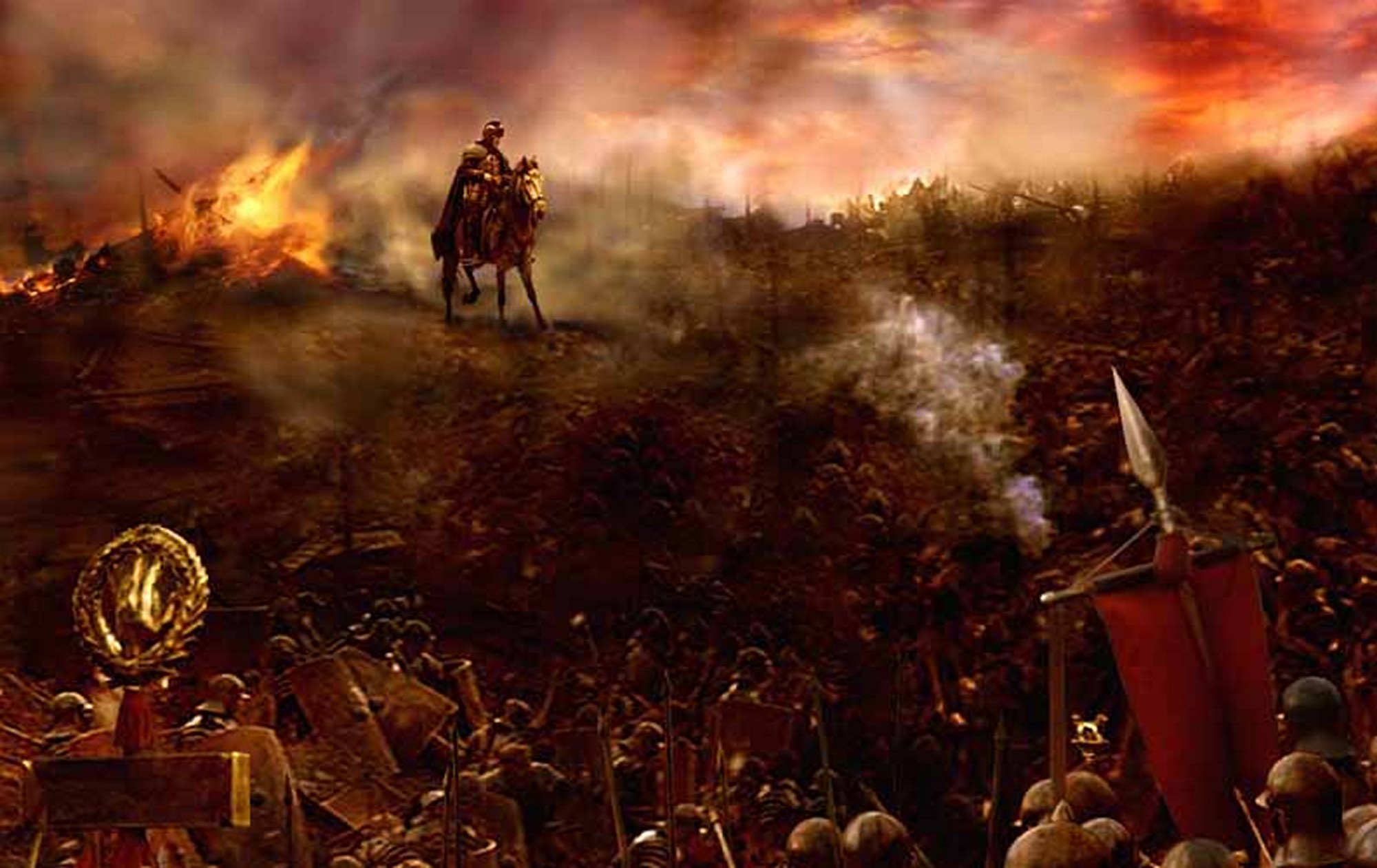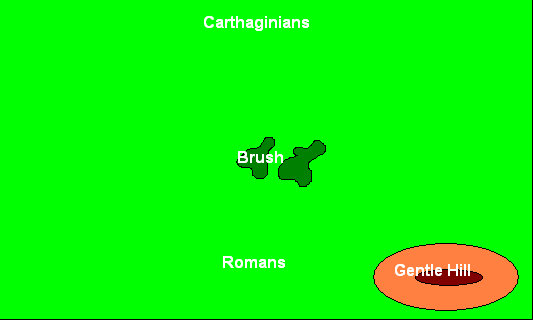
Battle of Dertosa - 215 B.C.

In early 215 BC The Romans crossed the Ebro River in force and laid siege to Ibera, a small Iberian town allied to Carthage. Leaving Himilco in charge at Cartagena, Hasdrubal marched north with his field army to the Ebro. However, he chose not to cross the Ebro to raid the Roman possessions nor did he attack the Roman army besieging Ibera. The Carthaginian army besieged a town allied with the Romans across Dertosa instead. The Scipios lifted their siege and moved to engage Hasdrubal. Thus, Hasdrubal had gained the strategic initiative. He had aided his allies by forcing the Romans to lift their siege and face the Carthaginian army on a site of his own choosing. The opposing armies encamped on a plain between Ibera and Dertosa within five miles of each other. After five days of skirmishing, the commanders drew out their armies for battle. Hasdrubal suffered a big defeat losing most of his army.
Although the Battle of Dertosa (known also as battle of Ibera) is not given the same importance as the Battle of the Metaurus, it had a critical influence on the strategic course of the war.
Had Hasdrubal won the battle, there would have been at least four Carthaginian armies operating in Italy by 214 BC, those of Hasdrubal, Hannibal, Mago and Hanno the Elder.
The cornerstone of the strategy which Hamilcar Barca had planned depended on the undisputed control of Iberia by the Barcids, and the ability to draw manpower and wealth from it. The defeat caused Carthage to send Mago Barca, along with Hasdrubal Gisco, a political rival of the Barcids to Iberia. This ended the Barcid domination, with far reaching consequences. In addition, Hannibal never managed to receive further reinforcements from Iberia.
The Romans gained the initiative in Iberia, which caused a drain of resources better employed elsewhere. Consequently, Mago was sent to Iberia with the reinforcements meant for Hannibal.
Although Hannibal would receive 4,000 Numidian Horse and 40 elephants in 215 BC, these were pitiful compared to the 17,000 soldiers that would be lost in Sardinia and the 28,000 soldiers that would be tied up in Sicily later. In short, the defeat at Dertosa took away most of the political capital Hannibal had won in Carthage through his victory at Cannae.
The opposing armies:
Romans
1- CiC RCvO (Gnaeus Scipio), 2RCvO, 1 ICvO, 20 RBdO, 10 IPsI - 36ME
2- SG RCvO, 24 RBdO, 12 RPsI, 6 RSpS, 4 IAxS - 54ME
3- SG RCvO (Publius Scipio), 6 RCvO, 20 RBdO, 10 IPsI - 39ME
4- 6 RBgO, 12 Camp TF, 10 RSpO - 22ME
Carthaginians
1- CiC RCvO (Hasdrubal), 6 RCvO, 22 RSpO, 4 IAxS, 4 IPsS, 1 IElI - 43ME
2- SG RCvO, 24 IAxS, 8 IPsO, 4 IPsS - 36ME
3- SG RCvO, 9 ILhO, 22 RSpO, 1 IElI, 4 IPsS - 40ME
4- 6 IBgO, 12Camp TF, 10 RSpO - 16ME

The table must be 180cm by 120cm. In the outer 20 cm players can deploy Cavalry, Light horses, Elephants and psiloi, while the rest of the armies can set up in the central 140cm (i.e.there is not the external zone where no troops can be deployed).
The elements in the army baggage corps must deploy inside the TF and cannot be moved outside the camp. They are just a garrison.
Carthaginians deploy first and move first. The battle start at sunset with no weather.